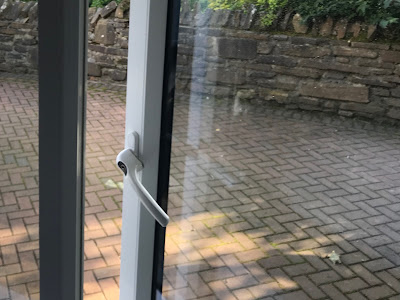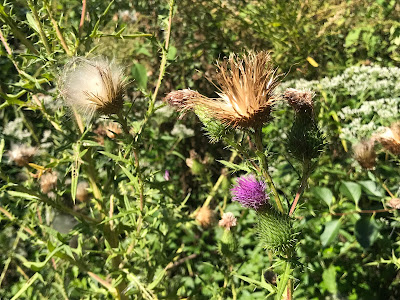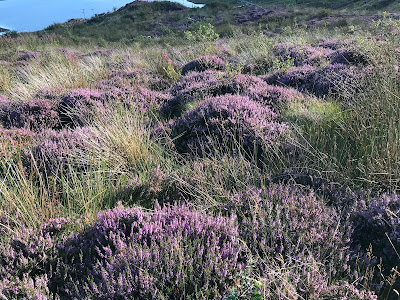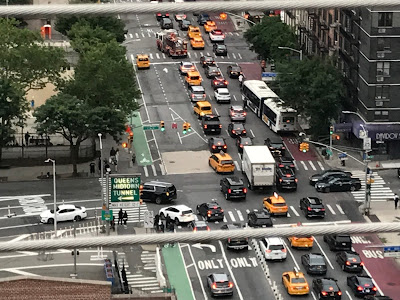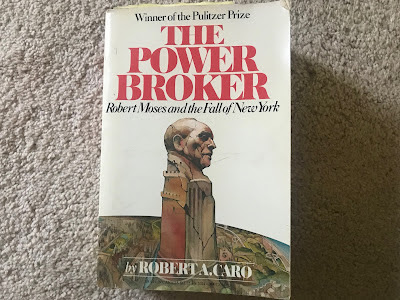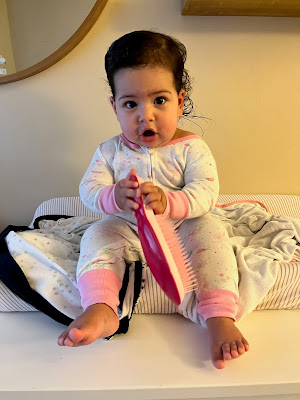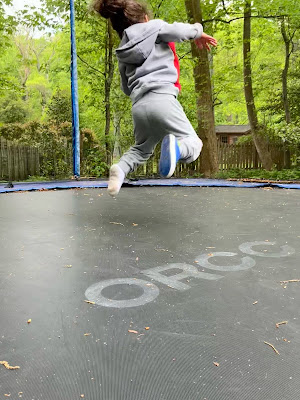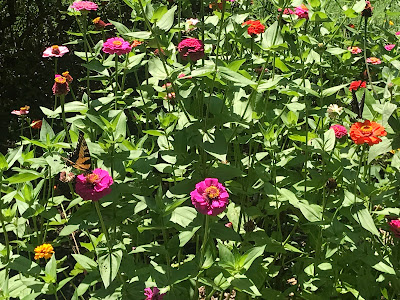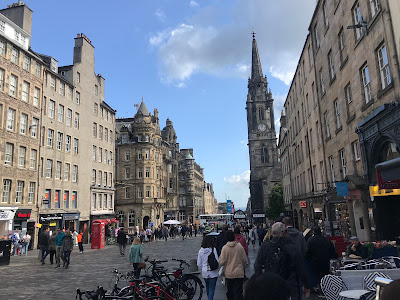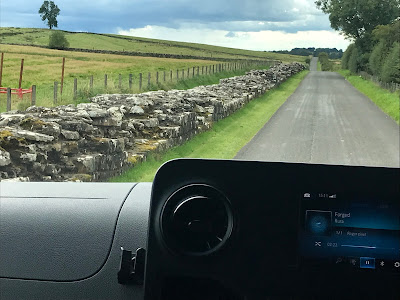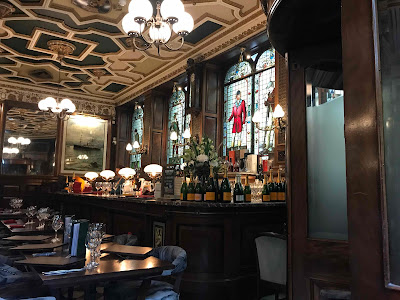Down of a Thistle
Several days during the trip last month the air was filled with flying fluff. It took a while to determine the source, to realize that the fluff was the down of a thistle, the national flower of Caledonia.
Here’s a perfect example of vacation thinking. Were I at home, I would find the thistle a weed and the fluff frustrating evidence of its spread. But in Scotland, I found it enchanting, winged messengers of hope and beauty.
Watching the gossamer stuff float through a heathered Highland landscape was a magical experience. It brought the Clement Clarke Moore lines to mind:
“He sprang to his sleigh, to his team gave a whistle/And away they all flew, like the down of a thistle …”
And that’s just what we did — fly away, that is. I miss that magical vacation thinking.
(I saw a lot more heather than thistles.)
Worth the Wait
I’m going to stay with The Power Broker for this post, too. I realize that most of my comments about the book have been about its weight. But 923 pages into it I can say at least a few words about its content.
The Power Broker: Robert Moses and the Fall of New York is an in-depth portrayal of New York City’s traffic and building czar, Robert Moses, who held sway over the Big Apple for more than three decades, crucial years during which much of the city’s modern infrastructure was shaped.
Moses built parks and dams, bridges and highways. He moved rivers and shorelines, condemned homes and destroyed neighborhoods. He shaped not just New York but all the cities of this country, because New York was held up as a model. And in it, public transportation took a back seat to the automobile. That there was a connection between this deficit and the highways that were clogged with traffic almost immediately after opening was just beginning to be understood in the 1940s and 50s.
The book is also a study of power, how it seduces and changes a person and, by extension, the places over which that person has control. In this meticulously researched account of Moses, author Robert Caro shows young reporters and writers how to tell a big story, one so big that for years it wasn’t understood, let alone written.
It’s for that reason that the book was assigned as summer reading before I entered a graduate journalism program years ago. I bought it then, a used copy for $7.50, but am only now getting around to reading it. The book has been worth the wait — as well as the weight.
(Entrance to the Queens Midtown Tunnel, which Moses tried to block. He disliked tunnels.)
Weights and Measures
In the book section of yesterday’s newspaper an article on feeling guilty about tomes we’ve never read featured a book I’m finally reading — The Power Broker by Robert A. Caro.
I found it interesting that the reason given for not reading this one was its weight. “It’s just heavy by itself, and that physical weight also weighs on my mind about having to heft it while reading it,” John Nash of New Mexico told the Washington Post.
Tell me about it! I was hefting it last night at 4 a.m. when I couldn’t sleep. And I’ve been hefting it ever since returning from the trip, where every book I read weighed exactly the same, as much as my 7.2-ounce Kindle.
I like to think I’ve adapted to the rigors of reading this four-pound behemoth, though. Pillows help.
September 10th
It’s Grandparents Day, and as we prepare to celebrate another family birthday (they come in clumps, don’t they?), I’m thinking, actually, of my parents.
They were never able to do what I’ll do today, which is to wake up in my own house and drive 25 minutes to hold, tickle, cuddle and celebrate a precious grandchild on her special day. I know they missed this, and I wish they’d had it.
I’ll be the first to admit that I chafe at the suburbs, that I look for opportunities to leave and spend weeks wandering around European villages where beauty is given greater priority than it is here.
But here … is where my heart is.
(Happy 1st Birthday, Aurora Anne! photo: CCG)
Bouncing Back
In the saga of returns, there is the personal return, as in people flying home to their primary residence. And then there is the return of the residence itself, when it comes into its own again.
This old house was well cared for during our absence by the girls, who came over with their families to mow the lawn, water the plants and sometimes just to hang out. But last night was when it fully arrived.
It was just a family birthday party, but these can be pretty lively. There were the toddlers shrieking, a baby cruising, and the oldest, the birthday boy himself, savoring the special meal and gifts. Hanging over it all, the parakeets sent out their joyous squawks.
Now, more than ever, we’re back.
(The trampoline usually plays a part in these big family gatherings. Photo: CCG.)
The Locals
It’s still pleasant on the deck at 8 a.m. as I watch the locals begin their day. Sparrows hop on and off the feeder, leaving it swinging slightly with their featherweight hops.
A downy woodpecker clings to a post, and a bluebird lands on the deck railing, sees me and flies away.
Now that the coneflowers have gone to seed the goldfinches have arrived. They enjoy the zinnias, too, which are still plentiful enough for cutting.
From the neighbor’s yard, I hear bluejays screeching and crows cawing. And in the tangle of rose branches above my head, a chickadee calls, as if to say, don’t forget about me.
All that’s missing is the whir of a hummingbird’s wing.
I’m waiting.
On the Road Again
The last time I strolled any distance was on the streets of Edinburgh. Covid has kept me down and given my feet something they’ve been wanting for months — a break.
But the break is over, feet. You’re on the line again, or, more to the point, you’re on the road again. This morning I woke up early and strong enough to tackle the neighborhood loop.
Yes, it will be 101 today, but at 7 a.m. it was a comfortable. 73. I walked and walked.
It felt terrific.
(Pedestrians on the Royal Mile.)
Ephemera
A woman enters the tiny chapel and crosses herself. I doubt she saw me notice but I noticed just the same.
The couple in line in front of us can’t take their eyes off each other, are forever touching shoulders, exchanging smiles. She has short hair and dimples. He wears a plaid shirt.
There were hundreds of moments like these on our trip through Scotland last month. Little things I glimpsed that I don’t want to forget. The ephemera of travel.
They are like this section of Hadrian’s Wall, a stretch that runs along a lane that’s currently in use. Here is this historical marvel, traces of a structure built two thousand years ago, and we’re driving along beside it as if it was a 21st-century shoulder.
The ordinary becomes extraordinary. And vice versa.
On Location
On this Labor Day I’ll continue my past few days track record of doing pretty much nothing, which is all I’ve felt like doing. But I have been able to read and watch movies, especially one film I’d been thinking about while we were in Edinburgh — “Chariots of Fire,” which won the Academy Award for best picture in 1981 and is a favorite of mine.
I learned that many of the scenes were shot in Edinburgh locales, including an old church (are there any other kind there?), an elegant eatery, and up in the Salisbury Crags near Arthur’s Seat.
It was doubly fun to watch the movie realizing that I was right there only a few days ago. Kinda dorky, I know. But entertaining, just the same.
(For “Chariots of Fire” fans, Harold and Sybil enter Cafe Royal through the revolving door that’s in the foreground while a band strikes up “Three Little Maids From School.”)
